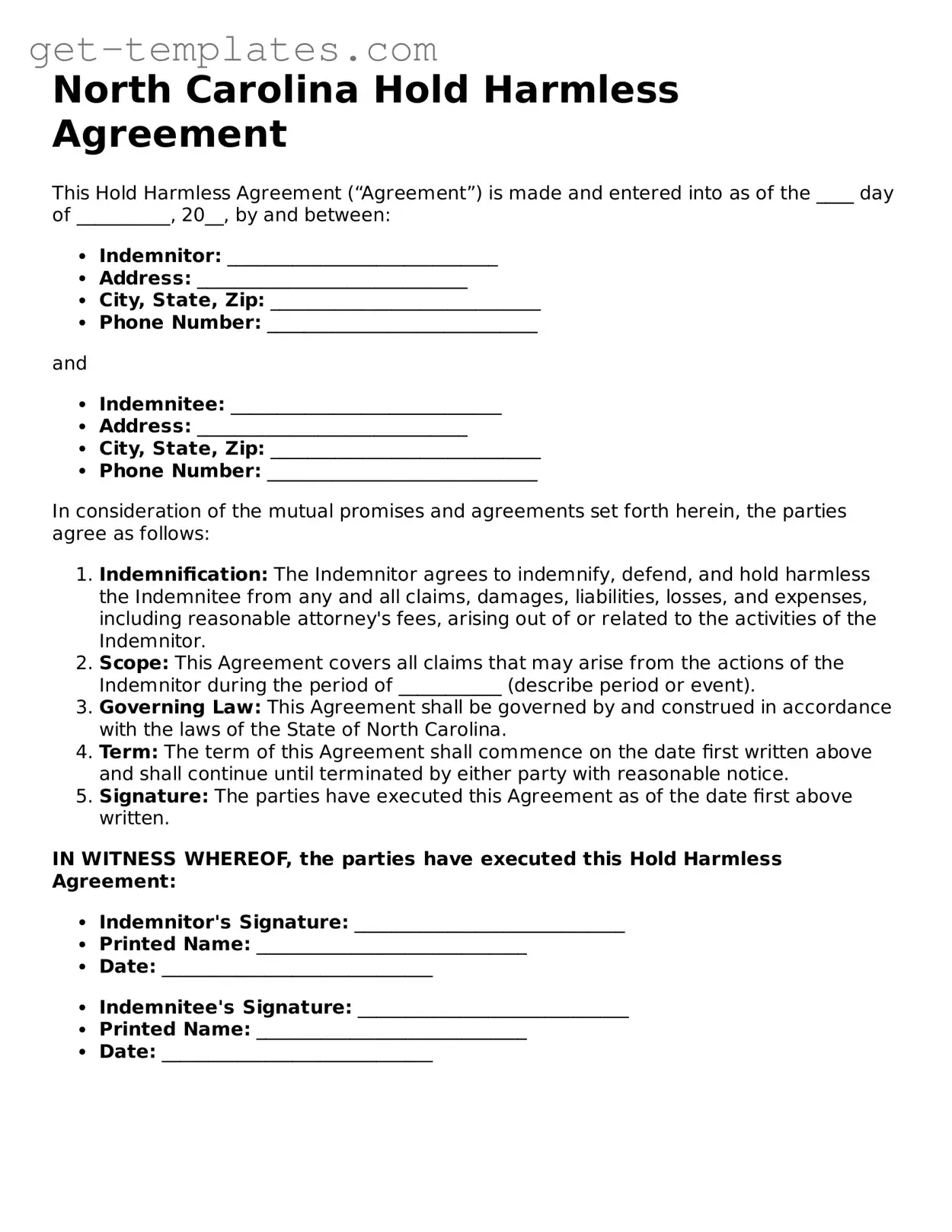What is a Hold Harmless Agreement in North Carolina?
A Hold Harmless Agreement is a legal document designed to protect one party from liability for certain actions or events. In North Carolina, this type of agreement is often used in various situations, such as rental agreements, construction contracts, and service contracts. By signing this document, one party agrees to assume responsibility for any potential risks, thereby shielding the other party from legal claims or damages.
Who typically uses a Hold Harmless Agreement?
Hold Harmless Agreements are commonly used by:
-
Property owners renting out their space
-
Contractors working on construction projects
-
Event organizers hosting public or private events
-
Businesses providing services that involve some level of risk
These agreements help clarify responsibilities and protect parties involved from unforeseen liabilities.
What are the key components of a Hold Harmless Agreement?
A typical Hold Harmless Agreement includes the following components:
-
Identification of Parties:
Clearly identify the parties involved in the agreement.
-
Scope of Agreement:
Specify what activities or situations the agreement covers.
-
Indemnification Clause:
Outline the responsibilities of the indemnifying party to cover any claims or damages.
-
Duration:
State how long the agreement will be in effect.
-
Signatures:
Ensure all parties sign the document to make it legally binding.
Is a Hold Harmless Agreement legally binding in North Carolina?
Yes, a Hold Harmless Agreement can be legally binding in North Carolina, provided it meets certain criteria. The agreement must be clear, specific, and signed by all parties involved. Courts typically enforce these agreements unless they are deemed unconscionable or violate public policy.
Can a Hold Harmless Agreement protect against gross negligence?
Generally, Hold Harmless Agreements cannot protect a party from liability resulting from gross negligence or willful misconduct. If a party acts with extreme carelessness or intentionally causes harm, courts may refuse to enforce the agreement. It's essential to understand the limits of liability when drafting or signing such agreements.
How can I create a Hold Harmless Agreement?
Creating a Hold Harmless Agreement involves several steps:
-
Determine the specific risks involved in the activity or situation.
-
Draft the agreement, ensuring clarity and specificity.
-
Consult with a legal professional to review the document.
-
Have all parties sign the agreement before proceeding with the activity.
Using templates can be helpful, but customizing the agreement to fit your specific needs is crucial.
What should I do if I need to dispute a Hold Harmless Agreement?
If a dispute arises regarding a Hold Harmless Agreement, consider the following steps:
-
Review the terms of the agreement carefully.
-
Communicate with the other party to resolve the issue amicably.
-
If necessary, seek legal counsel to understand your rights and options.
-
Consider mediation or arbitration as alternative dispute resolution methods.
Addressing disputes early can often lead to a more satisfactory resolution for both parties.
Where can I find a template for a Hold Harmless Agreement?
Templates for Hold Harmless Agreements can be found in various places, including:
-
Legal websites that offer free or paid templates
-
Local business associations or chambers of commerce
-
Consulting with an attorney who specializes in contracts
While templates can provide a good starting point, always ensure that the final document is tailored to your specific situation.
